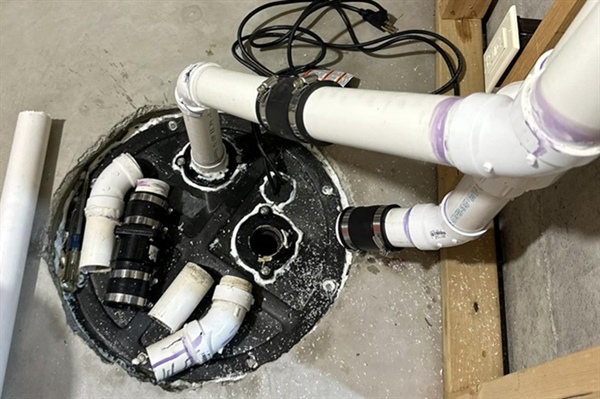Sump Pump Success: Key Maintenance Tips for Keeping Your Basement Dry

Your sump pump is an essential part of keeping your basement dry and safe from water damage, especially during heavy rains or flooding.
Regular maintenance of your sump pump can prevent issues that lead to basement flooding, which can be costly and damaging.
In this article, we’ll cover essential tips for maintaining a sump pump, including how often to test it, when repairs are needed, cleaning routines, the advantages of a backup system, and how to know when it’s time for a replacement.
Each of these questions offers vital information to help you ensure that your sump pump is ready when you need it most. With preventive care and a few routine checks, you can protect your basement from unexpected water issues and maximize the lifespan of your sump pump.
Let’s dive into these topics to help you keep your sump pump in top working order and your basement dry and safe.
How Often Should You Test Your Sump Pump?
Testing your sump pump regularly is crucial to ensure it's ready for heavy rainfall or flooding. Ideally, it should be tested every three months, especially before the rainy season or if you’ve experienced basement flooding in the past.
To test, pour a bucket of water into the pit and observe if the pump activates and drains the water efficiently. This simple check can help catch issues before they become costly repairs.
During these tests, listen for unusual noises or vibrations. These can be early indicators of mechanical issues that may require professional attention.
Regular testing, along with routine maintenance, helps keep your sump pump in optimal working condition, reducing the risk of basement flooding during critical times.
What Are the Signs That Your Sump Pump Needs Repair?
Knowing the warning signs of sump pump issues can save you from unexpected water damage. If your pump is making unusual sounds, this can indicate motor problems or debris stuck in the impeller.
Additionally, if the pump vibrates excessively or fails to turn on when water levels rise, these are signs that it needs immediate attention. Ignoring these issues can lead to complete failure during a heavy storm.
Other indicators include frequent cycling, which may suggest a faulty float switch or an incorrectly sized pump. If you notice any of these signs, consider consulting an expert for an evaluation.
Properly addressing repairs in the early stages can extend the lifespan of your sump pump and prevent basement flooding during critical times.
How Do You Clean & Maintain a Sump Pump?
Cleaning and maintenance are essential to ensuring the sump pump’s reliability. Every few months, check for and remove debris in the sump pit that could obstruct the pump's operation.
Unplug the unit and remove it from the pit to clean the inlet screen and impeller, as dirt buildup can reduce efficiency. Rinse the pump with clean water and inspect for damage, particularly to the power cord and float switch.
It's also helpful to run water through the pump periodically to ensure smooth operation and confirm that the discharge pipe is free of clogs or blockages.
Following these steps can help reduce the chance of mechanical issues, extend the pump's lifespan, and ensure it's ready to protect your basement from flooding.
What Are the Benefits of a Backup Sump Pump?
A backup sump pump provides an additional layer of security against flooding, especially during power outages or primary pump failures.
Battery-powered or water-powered backup systems activate when the main pump is out of commission, keeping water out of your basement during critical moments. These backup systems can be invaluable, especially in areas prone to frequent storms and power interruptions.
Installing a backup system also ensures peace of mind. It adds a fail-safe for homeowners who rely heavily on sump pumps for basement protection. The small upfront investment in a backup pump can save thousands in potential water damage, making it a wise choice for comprehensive flood prevention.
When Should You Replace Your Sump Pump?
While sump pumps are designed to last, they have a limited lifespan, typically around 7-10 years, depending on usage and maintenance. If your pump is approaching this age range, consider replacing it to ensure reliable performance during storms. Other signs it’s time for a replacement include frequent repairs, motor issues, or decreased efficiency even after maintenance.
Upgrading to a new model can offer improved efficiency, additional features, and increased peace of mind. A timely replacement can ensure you avoid unexpected failures and protect your basement against water damage during peak seasons.
To explore our full range of options, call Modern Plumbing and Heating at 763-639-1632 or message us online and find the right solution for your home.